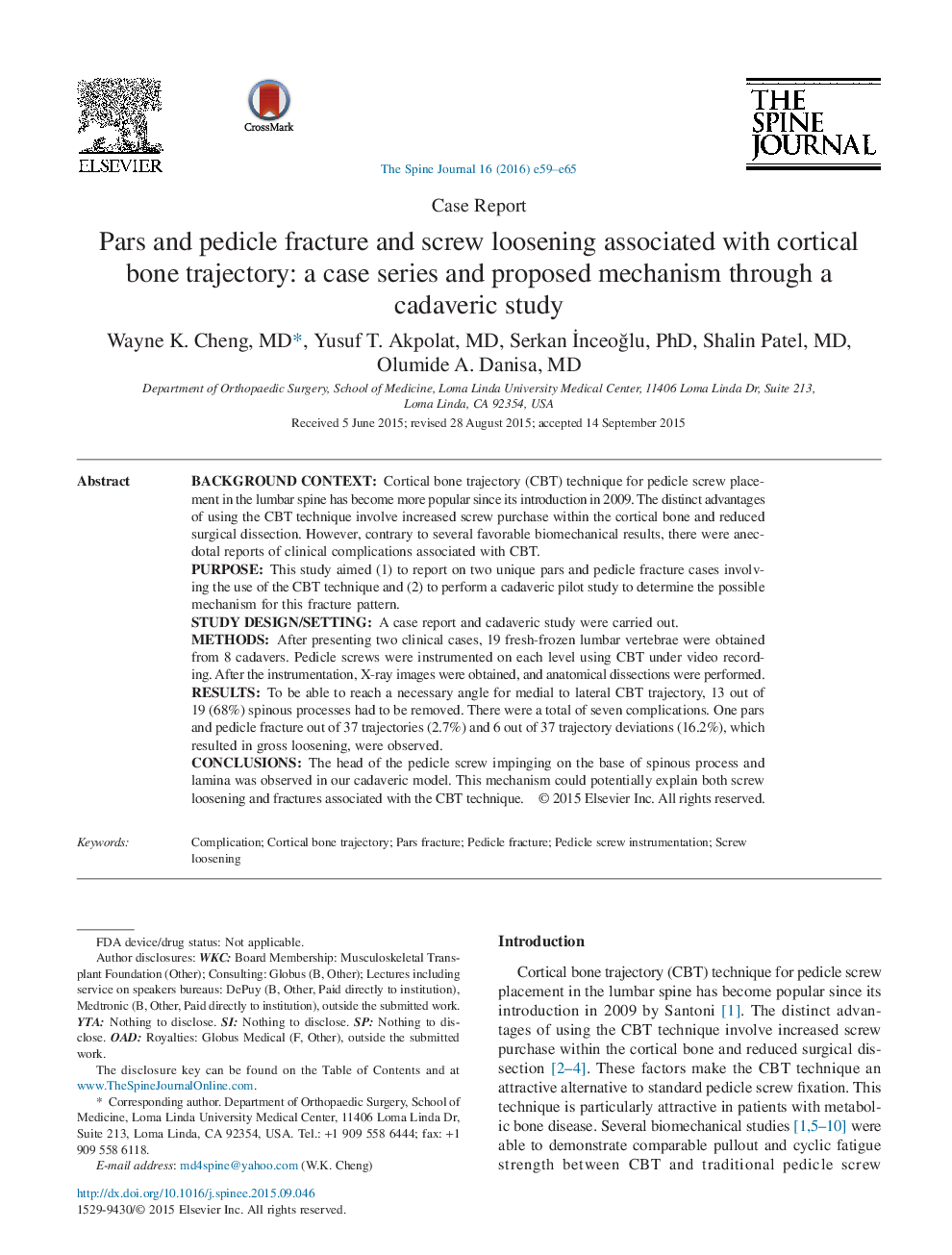| Article ID | Journal | Published Year | Pages | File Type |
|---|---|---|---|---|
| 6211690 | The Spine Journal | 2016 | 7 Pages |
Background ContextCortical bone trajectory (CBT) technique for pedicle screw placement in the lumbar spine has become more popular since its introduction in 2009. The distinct advantages of using the CBT technique involve increased screw purchase within the cortical bone and reduced surgical dissection. However, contrary to several favorable biomechanical results, there were anecdotal reports of clinical complications associated with CBT.PurposeThis study aimed (1) to report on two unique pars and pedicle fracture cases involving the use of the CBT technique and (2) to perform a cadaveric pilot study to determine the possible mechanism for this fracture pattern.Study Design/SettingA case report and cadaveric study were carried out.MethodsAfter presenting two clinical cases, 19 fresh-frozen lumbar vertebrae were obtained from 8 cadavers. Pedicle screws were instrumented on each level using CBT under video recording. After the instrumentation, X-ray images were obtained, and anatomical dissections were performed.ResultsTo be able to reach a necessary angle for medial to lateral CBT trajectory, 13 out of 19 (68%) spinous processes had to be removed. There were a total of seven complications. One pars and pedicle fracture out of 37 trajectories (2.7%) and 6 out of 37 trajectory deviations (16.2%), which resulted in gross loosening, were observed.ConclusionsThe head of the pedicle screw impinging on the base of spinous process and lamina was observed in our cadaveric model. This mechanism could potentially explain both screw loosening and fractures associated with the CBT technique.
